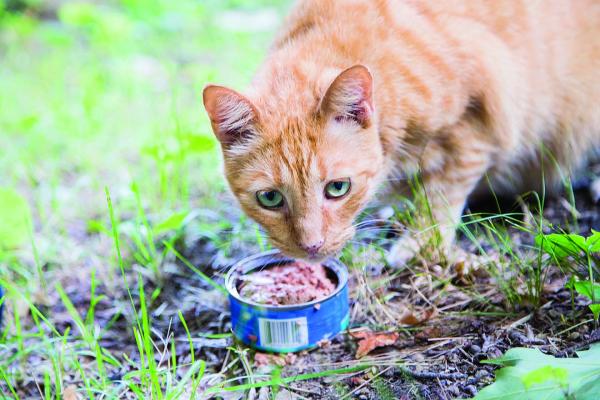October 15, 2020

As any animal lover knows, the annual calendar is peppered with dozens of national animal-themed holidays, such as Adopt a Rescue Dog Day and Dress-up Your Pet Day. For me, however, the most interesting of these animal holidays is National Feral Cat Day on Oct. 16, primarily because it’s a subject that’s commonly overlooked.
It starts with the term “feral,” a word that is considered synonymous with calling a cat “bad.” In years past, any cat living on the streets or roaming freely around our community would be labeled as feral.
Biologically, feral cats are just like house cats, the only difference being that they have not been properly socialized with humans. Feral cats do not turn to humans for food, shelter, or comfort, and are survivors - in every sense of the word.
Feral cats also make up a larger population known as “community cats.” Community cats consist of feral, shy, owned indoor/outdoor cats, as well as friendly strays. In Massachusetts, there are an estimated 700,000 community cats, many of which live in established colonies – areas that provide protection, shelter, and have an abundant food source. Despite living on the streets, these animals deserve compassion and care.
The figure 700,000 may seem overwhelming; however, there are a number of proven ways to assist these cats to help reduce this number drastically.
One of the greatest measures to mitigate community cat populations is by Trap, Neuter, Return, or TNR. The Animal Rescue League of Boston (ARL), along with a number of other organizations throughout Massachusetts, safely trap community cats and spay or neuter them so that they can no longer reproduce, before returning them back to their habitats. In addition, ARL also provides community cats with routine veterinary care and vaccinations.
TNR services also provide an opportunity to evaluate these animals behaviorally. In many cases, community cats are friendly and deemed to be adoptable. In 2019, ARL took in nearly 600 community cats and of those more than 60 percent were adopted into loving homes!
So what can you do as an individual to care for the animals that are living in community cat colonies?
First and foremost, you can report these animals to your local animal welfare organization (like ARL) or animal control officer to make them aware of these animals and to keep tabs on them.
You can also join a group in your area that takes an interest in community cats. These groups take on the task of keeping these cats fed, assisting in TNR, and also monitoring their condition and numbers.
Finally, you can help ensure that these cats are protected by providing outdoor shelters. While shelters can be purchased, many animal lovers find it more gratifying to build a simple structure themselves, with the help of online instructional videos!
If you have an indoor/outdoor cat who may mingle with community cats, you can keep them safe and secure and also help protect wildlife by building a catio – a space off your home that gives cats the outdoor experience, but keep them safe inside. Like outdoor shelters, a catio can be purchased, or if you’re adventurous, you can tackle it as a DIY project!
Without proper shelter and care, cats who are a part of our communities are vulnerable to illness and injury. It is up to all of us to care for these animals, and to make sure they are safe and healthy as we face the onset of another New England winter.
Dr. Edward Schettino is the president and CEO of the Animal Rescue League of Boston, and has a doctorate in Veterinary Medicine from the Cummings School of Veterinary Medicine at Tufts University. Pet questions? Email ARL at press@arlboston.org.


